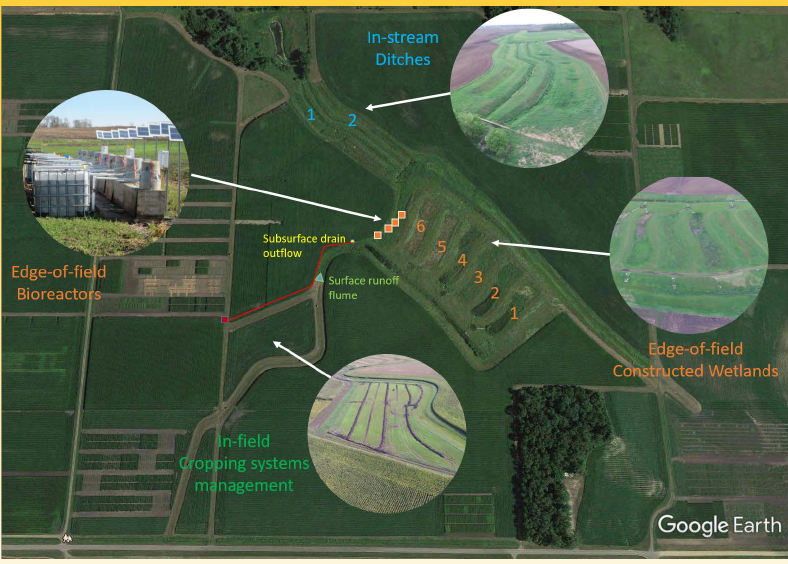Principal Investigator: Jeffrey Strock
Organization: University of Minnesota, Southwest Research & Outreach Center
Award Amount: $365,780
Start Date: May 15, 2017 | End Date: June 30, 2020
Project Manager: Heather Johnson (Heather.Johnson@state.mn.us)
FINAL REPORT Integrated Landscape Management for Agricultural Production and Water Quality Midwest*
(The report is included in the Minnesota Water Research Digital Library.)
The goal of the project is to quantify the individual and combined impacts of certain in-field, edge-of-field, and in-stream management practices on water quantity and quality for a small watershed in southern Minnesota. This project will use computer simulation modeling to scale-up the results from the initial study area to a larger watershed scale (HUC 8).
Background
Nutrient losses to surface waters are of great concern both regionally and nationally. Excess nutrients in lakes, rivers, and streams can lead to increased growth of algae and challenging aquatic plants. This can interfere with the use of our waters for commercial fishing, recreation, industry, agriculture, and drinking. Farmers use a variety of conservation practices to minimize the loss of nutrients, like nitrogen and phosphorus, from their fields, but more needs to be done to understand which practices or combination of practices provide the best results.
The challenge is to find conservation practices that both improve water quality and maintain farm productivity and profitability. To do so, we need to understand the relationship between land management and the overall health of lakes, rivers and streams.
Conservation practices need to accomplish numerous tasks. They need to provide flood control, trap soil, recycle nutrients, and create and maintain biological diversity. If placed in the upper regions of a stream or watershed they may have the greatest impact on life in downstream lakes and rivers. To efficiently improve water quality in headwater areas a combination of in-field, edge-of-field, and in-stream management practices will need to be installed.
Objectives
There were two primary objectives to this project:
-
Measure individual and cumulative response of cover cropping, bioreactors, constructed wetlands and drainage ditch management on hydrology, nitrate-nitrogen, and phosphorus and sediment loss within a small agricultural watershed.
-
Predict flow, sediment, and nutrient export by employing a watershed-scale modeling approach. Employ a calibrated and validated simulation model in concert with field monitoring data to quantify the individual and combined effects of a suite of agricultural management practices in order to identify optimal combinations for improving the health of lakes, rivers, and streams.

Deliverables
Results of the project will advance our scientific understanding of the individual and combined impacts of best management practices on water quantity and water quality in cropping systems common in southern Minnesota. This project will provide important information that will allow farmers to design management systems in ways that are both effective for production and environmentally responsible. This project will provide important information to state agencies relevant to attaining planned nutrient reduction goals including:
•Water quantity reduction potential of cover cropping, constructed wetlands, and drainage ditch management.
•Water quality reduction potential for nitrogen, phosphorus, and sediment for corn-soybean cropping systems from cover cropping, bioreactors, constructed wetlands, and drainage ditch management.
•Model projections for implementation of best practices for water quantity and water quality benefits. All finalized models will by shared through an open platform called SWAT Share to encourage further use and development.

